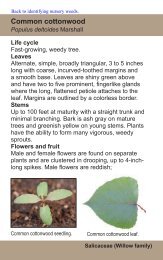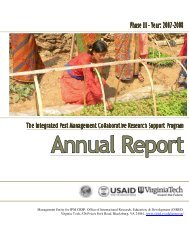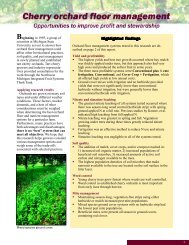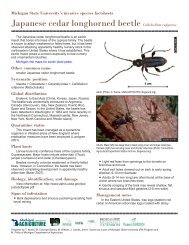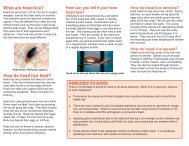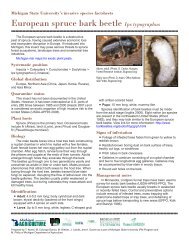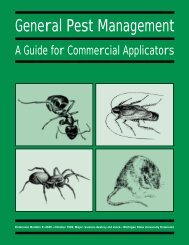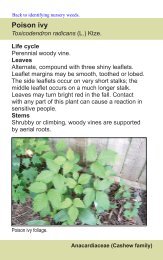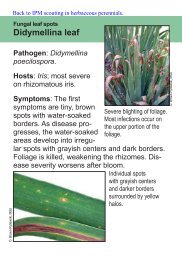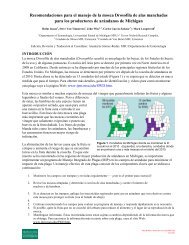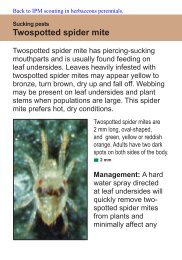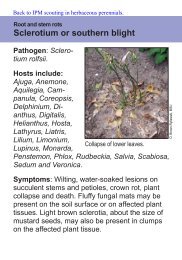Whole Manual - Michigan State University: Integrated Pest ...
Whole Manual - Michigan State University: Integrated Pest ...
Whole Manual - Michigan State University: Integrated Pest ...
You also want an ePaper? Increase the reach of your titles
YUMPU automatically turns print PDFs into web optimized ePapers that Google loves.
BLACK SCURF/STEM CANKER<br />
DISEASES OF SNAP BEANS<br />
FUSARIUM ROOT ROT<br />
Fusarium root rot in snap beans.<br />
Pathogen type: fungus (Fusarium solani f. sp. phaseoli)<br />
Disease symptoms: Two to three weeks after planting,<br />
reddish brown streaks appear on the stem just below the<br />
soil surface. The lesions may extend upward to the soil<br />
surface and become brown with age. Severely infected<br />
roots die. Plants appear stunted with yellow leaves, but<br />
the fungal infection seldom kills the entire plant.<br />
Rhizoctonia solani causes tuber and stem damage in<br />
potatoes.<br />
Pathogen type: fungus (Rhizoctonia solani)<br />
Disease symptoms: This pathogen is both seed- and soilborne.<br />
On tubers, irregularly shaped, black, canker-like<br />
masses appear—black scurf. The pathogen causes brown<br />
to black lesions on belowground stems of immature<br />
plants. Eventually, these lesions sink into the stem surface,<br />
causing cankers that can girdle and kill stolons or<br />
stems. This results in pruning and loss of tuber development<br />
sites.<br />
Environmental conditions favoring disease: Disease<br />
development is enhanced during cool, wet weather and<br />
in cold, wet soil.<br />
Environmental conditions favoring disease: Early planting<br />
in cool, moist soil favors the disease. Any conditions<br />
reducing root growth increase the likelihood of infection<br />
with Fusarium root rot. The pathogen can survive for<br />
years in the soil in the absence of beans.<br />
Control strategies:<br />
■ Avoid plant stress. The disease causes little damage<br />
to healthy plants. A three-year crop rotation out of<br />
beans reduces the chance of a Fusarium infection.<br />
WHITE MOLD<br />
Control strategies:<br />
■ Practice crop rotation with non-host crops.<br />
■ Encourage rapid plant development of sprouts to<br />
reduce the disease severity.<br />
■ Remove plant residue to allow soil to dry out and<br />
warm up in the early spring.<br />
■ Plant disease-free seed. Seed treatment effectively<br />
controls the seed-borne pathogen.<br />
White mold kills branches and stems, giving them a white<br />
appearance.<br />
Chapter 7<br />
74<br />
Vegetable Crop <strong>Pest</strong> Management



